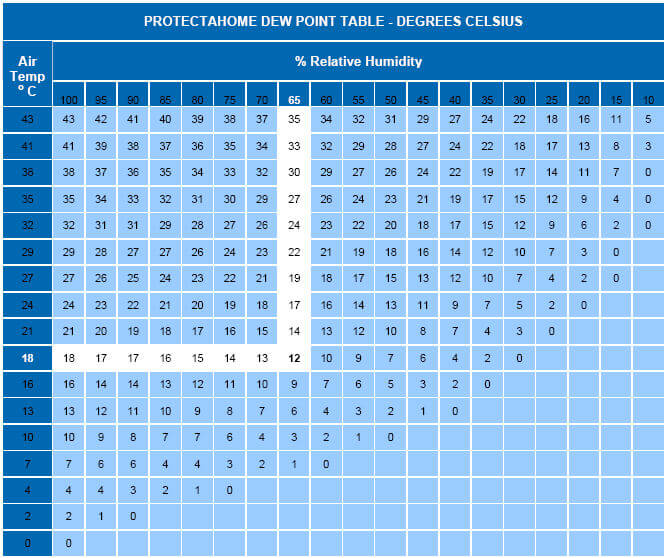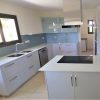Damp. Something those from the cooler climes of Northern Europe don’t tend to associate with the 300+ sunny days a year of Mediterrean Cyprus, but, it occurs in many buildings on the island.
 Whilst there are many different scenarios where structural damp causes a plethora of visual problems, there are only two causes of unwanted moisture in a Cyprus property : ‘condensation from inside’ or ‘penetrating from outside’.
Whilst there are many different scenarios where structural damp causes a plethora of visual problems, there are only two causes of unwanted moisture in a Cyprus property : ‘condensation from inside’ or ‘penetrating from outside’.
Whilst both are generically known in Cyprus as ‘damp issues’, the causes are completely different, although both indirectly relative to property construction methods.
Condensation Damp Cause
Preventing condensation in Cyprus is remarkably easy, and does not require a so called ‘fully qualified damp specialist’, just use some common sense. As long as you understand the cause (cold surface AND elevated humidity) then you can implement the solution.
- decrease internal air humidity (increase ventilation, reduce moisture generation)
- increase internal surface temperature (sufficient heating system and thermally insulated walls)
Prevention Tip 1 : Moisture Generation
The home itself doesnt produce moisture, however the home occupier (us!) does. Whilst we breath, whilst we bathe, whilst we cook : all of things simple activities generate moisture into the home.
- Put a lid on saucepans to keep the steam inside.
- Do not leave kettles boiling.
- Dry washing outside.
- Avoid using paraffin or bottled-gas heaters.
- Avoid breathing
OK, so the last one is a joke, please keep breathing! But please consider it is estimated that an average family of 4 outputs around 10 litres of water into the air per day, so, as we cannot stop this itself, we can only ensure we …
Prevention Tip 2 : Ventilation
At its simplest just open the windows ! A small gap (1-2cm) will allow the dry outside air to circulate into the home, and will reduce the humidity. In areas with frequent elevated levels of humidity (bathroom, kitchen, laundry room) passive or active air extraction systems can be installed.
Check out our, exclusive to Cyprus, Condensation Cure : Ultrovents
- Ventilate all rooms at regular intervals to remove humid air. Note that tight buildings require more active ventilation!
- Mechanical ventilation systems should not be stopped.
- Cooking, bathing and showering all produce steam. Open the window or put on the fan,and close the door to prevent the damp air circulating into other rooms.
- At other times, leave all the doors to different rooms open to allow the air to circulate.
- To avoid condensation in bedrooms, open the windows for 15 minutes each morning.
- Human breathing puts considerable moisture into the indoor air.
- Move items of furniture away from the wall slightly so that air can pass behind them.
- Leave the doors of cupboards open from time to time to air them.
Prevention Tip 3 : Surface Temperature
Thermal comfort ranges are very subjective but keeping the home warm during winter with a stable temperature of approximately 18-21C should keep you comfortable. Unfortuantely with most Cyprus housing built without sufficient thermal breaks and simple aluminium windows heat easily disipates out of the home. Replacing windows with a energy efficient thermal break system will help.
We provide aftermarket installation of external or internal wall insulation, as well as internal ceiling insulation or external roof insulation whichi will significantly increase the ability of the surfaces to stay warmer.
- Ideal temperature usually ranges between 19-22C living rooms,and 16-20C in the bedrooms.
- When away from home, the temperature in the rooms should not drop under 15C to avoid condensation and increased humidity levels.
- Do not heat up cold bedrooms in the evening by opening the door to heated rooms. The warm and humid air will condensate on the cold walls of the bedroom.
- Good insulation of the building helps preventing mould growth due to higher temperature of the walls. Again: note that tight windows and buildings require more active ventilation!
 Act Now
Act Now
The break out of mould can be a real health danger, mould spores are around us all the time, but like seeds in the field, only when the right circumstances are provided will the mould start to replicate and grow.
Check out this calculator to see how different air temperature, humidity and surface temperature combine to bring mould to your home within days.
Condensation Damp
As we are now entering into the winter period in Cyprus many residents are starting to feel the chill in the air, and with the majority of houses in Cyprus being built without any thought to insulation (no cavity wall, or other thermal break) heating systems are now used in the evenings, despite relatively comfortable day time temperatures. It is now that condensation damp starts to become a problem, and if not managed properly secondary problems, such as mould, will occur.
Simple school physics tells us that as we heat air it is able to hold more moisture, this warm & wet air condenses on contact with cooler surfaces where water droplets will form. So in our homes in winter we keep the windows and doors closed to maintain temperature, we heat the air for our comfort, and we spend more time inside.
All of this actually increases the humidity in the home, and when this humid air touches the cold external walls or windows or other cold spots then we will start to see the water droplets from condensation, and in more advanced stages, yellow-green or even black mould.
Normally walls on the north face that receive no sun during the day are the coldest in the home and are often the first to display issues in the corners.
Check out this table below which shows how the dew point (condensation point) is affected by air temperature & humidity levels.




